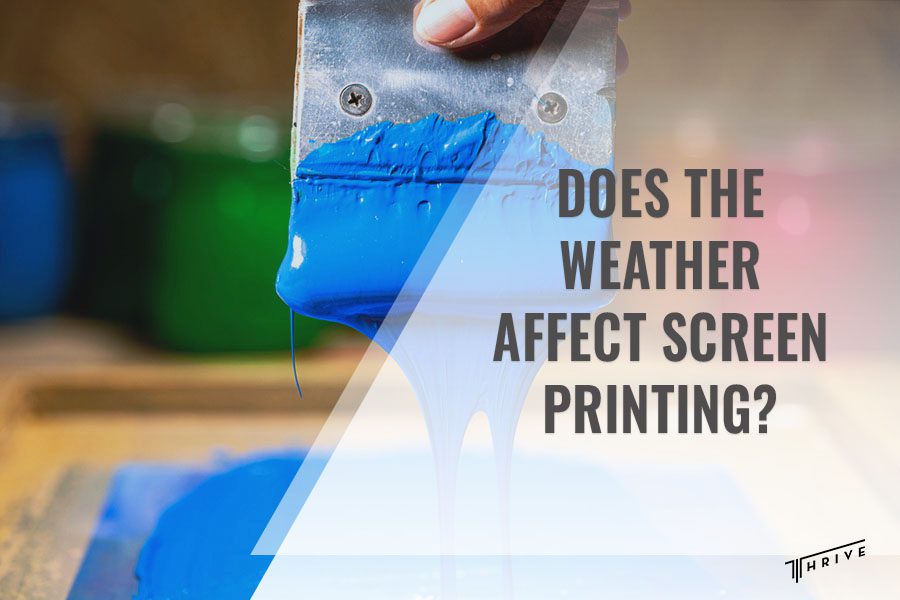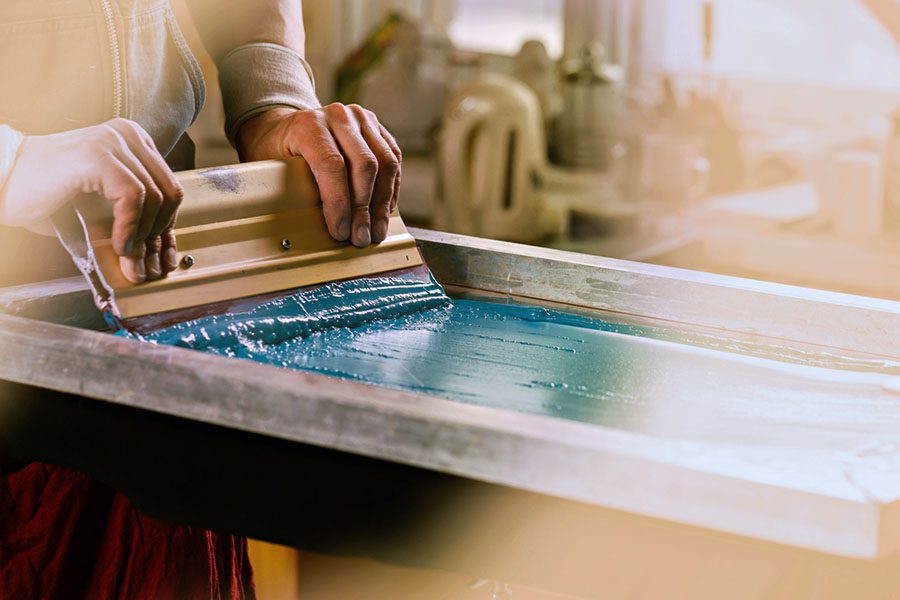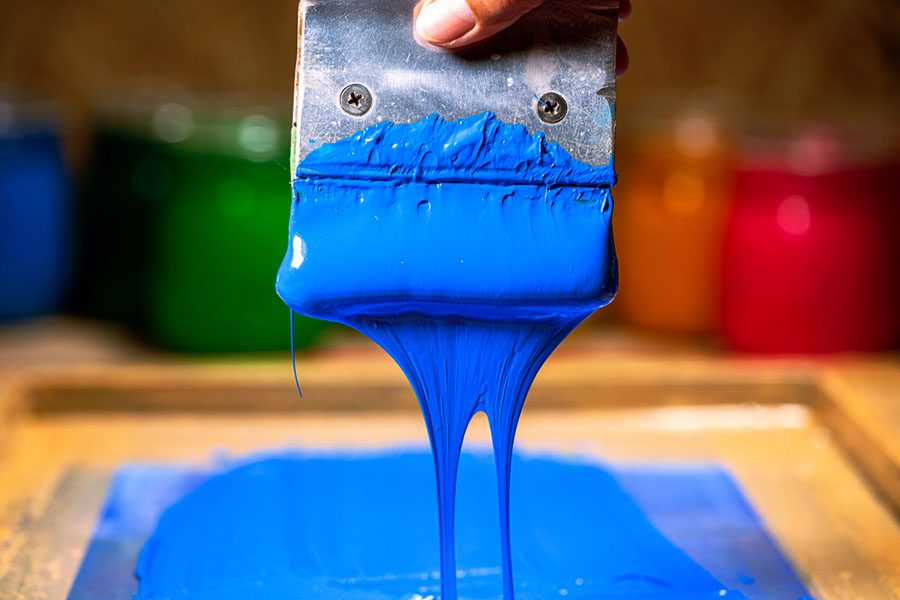
Ever since the inception of printing art in the screen printing industry, there have been many developments. These advancements allowed us to streamline the process. Still, many factors affect the quality of prints. One of the most common questions among beginners is, does the weather affect screen printing?
As long-time industry leaders at Thrive Screen Printing, we’ve perfected the printing process to ensure the highest quality prints for our clients. Keep reading to find out if the weather affects screen printing and for our advice on dealing with it.
Does the Weather Affect Screen Printing?
High-quality screen printed material should last, on average, around 10 years and more if you properly take care of them. However, the first thing that determines the screen printing quality is the external factors in the space in which the process takes place.
The weather does affect screen printing. As the best wholesale clothing printing company, our screen printing professionals understand precisely how weather conditions impact the process.
In terms of weather conditions, the most significant factors impacting screen printing quality are the fluctuations in temperature and humidity. Screen printers must adjust their shops according to the climate in which they live.
Moreover, screen printing ink must be stored differently during the winter and the summer. To prolong the ink’s life, you need to store it properly during winter and summer, mostly depending on the temperatures and the location. Not properly stored ink could result in freezing in winter or the ink to start curing during the summer days.

Does Temperature Affect Screen Prints?
Temperatures, especially extreme ones, might affect screen printing significantly. It may be more prominent if your shop is in a location with a changing climate.
Screen printing professionals must adjust their shops to ensure their prints remain unimpacted by temperature fluctuations. With changing seasons, printers experience hot and cold weather and temperatures that significantly affect the screen printing process.
Every experienced screen printer knows that ensuring high-quality prints means controlling the temperature in the printing shop. Temperature may affect your ink and emulsion.
Screen printing and cold weather
Cold weather may increase the viscosity of plastisol ink. This makes manual screen printing challenging. The ideal temperature for screen printing with plastisol inks is above 75 °F. Anything below this can make it challenging to achieve even and quality print.
In contrast, water-based inks and emulsions can even freeze if the temperatures get cold enough. This happens because these inks have a high water content.
If the inks get too cold, their viscosity will change, as with plastisol inks, making them hard to print. We recommend storing water-based inks and above-ground in insulated rooms.
Screen printing and warm weather
If you reside in a location with a hot climate, you must store all screen printing ink in a cool space away from direct sunlight. If screen printing ink is left in excessive heat, somewhere between 180 °F to 240 °F, it can start the gelling process. Once the gelling process starts, screen printing inks can become thicker and much harder to print.
Suppose you live in a dry and hot climate and use water-based inks. In that case, you may have difficulty achieving the desired print results. Water-based inks may evaporate fast and dry on the printing screens in hot temperatures.
Does Humidity Affect Screen Printing?
Besides temperature fluctuations, those living in warm and dry climates face humidity as another challenge. High humidity may prevent your screen prints from drying properly.
If you live in an area that experiences high humidity, you must allow the emulsion to dry completely before exposing the print screens. To ensure that your emulsion is dry, check if it’s tacky. As long as it remains tacky, it is not ready for exposure.
For this purpose, you should adjust the screen printing curing time. Also, remember to monitor your conveyor dryer setting closely. This is crucial in order to accommodate the increased curing time due to high humidity levels.
Another important thing to keep in mind is the difference between cotton and synthetic materials. For instance, cotton garments tend to retain more moisture than synthetic materials, meaning they may require longer drying time during humid days.
We advise you to wait until your screen printing garment reaches 212 °F before the curing process can start. This will result in a good finished product.

Combating the Effects of Extreme Temperatures
Keep in mind the following things when combating the effects of extreme temperatures.
- During hot weather, keep your screen printing inks on lower shelves where the temperatures are cooler. The top shelf usually has the hottest temperatures due to being closer to the ceiling.
- In contrast, keep screen printing inks on the highest shelves and in insulated rooms during cold weather. Avoid leaving them on the ground, as this is where the temperatures will be the coldest.
- Before using your screen printing inks, remember to mix them. Mixing the inks before use will bring the consistency to the right.
- Keeping the screen printing inks away from direct sunlight is not enough. Also, keep them away from heat sources in the area where you store them. Any heat source has the ability to affect the consistency of screen printing inks.
Conclusion
Does the weather affect screen printing? The answer is yes; both extreme cold and hot weather have the potential to affect screen printing. Due to this, you must maintain ideal temperature and humidity levels in your printing shop.
Keep in mind our recommendations for combating the effects of extreme temperatures, and you might prolong the prints’ lifespan. Happy printing!

Robert Fisher is the founder and CEO of Thrive Screen Printing and brings extensive experience in the screen printing and fulfillment industry.

